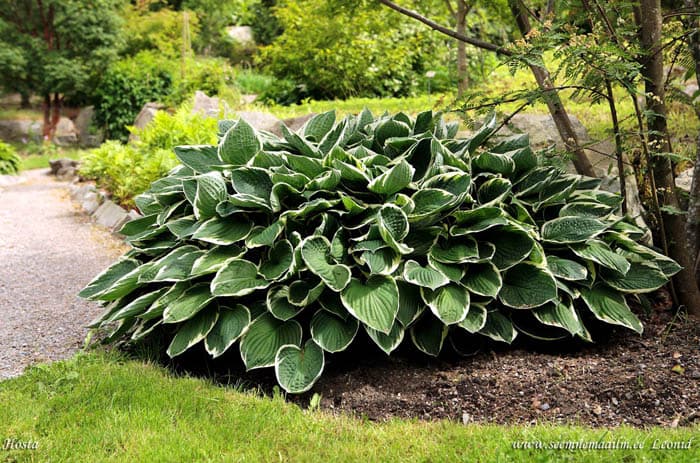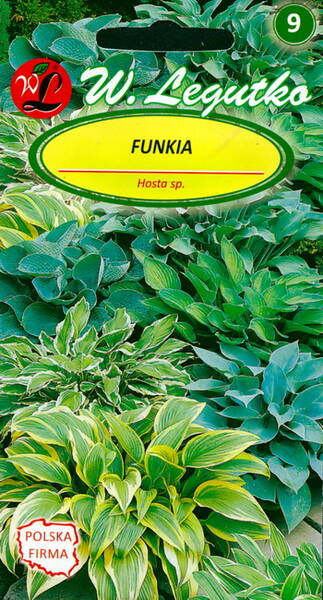"Queen of shadow".
Perennial. Plant height 30-50 cm.
A long-lived ornamental leaf plant with a wide range of leaf colours - from blue to almost yellow, often with a contrasting border, enlivens any corner of the garden.
Funkia is equally good both in single plantings against the background of the lawn and in group compositions.
It is no less decorative in bloom: its peduncles are densely strewn with bell-shaped flowers of white or lilac colour.
Sowing: March-April under glass for seedlings. To stimulate germination, the seeds are placed in a refrigerator at a temperature of +1+5°C 3-5 days after sowing and kept moist for 20-30 days. Seedlings do not appear at the same time. Seedlings are planted in open ground at a distance of 60-80 cm between plants.
Care: prefers partial shade and slightly acidic, moist, humus-rich soils. In hot, dry weather, regular watering is necessary. Favourably responds to spraying and top dressing. Does not like frequent transplants and small divisions.
Flowering: July.

Perennial. It is frost-tender. It is in flower from August to September.
The flowers are hermaphrodites (have both male and female organs). We rate it 1 out of 5 for usefulness. The plant prefers light (sandy), medium (loamy) and heavy (clay) soils and can grow in heavy clay soil. The plant prefers acid, neutral and basic (alkaline) soils. It can grow in semi-shade (light woodland) or no shade. It requires dry or moist soil.
Habitats and Possible Locations: Woodland, Sunny Edge, Dappled Shade, Shady Edge.
Cultivation details: Many other species of Hosta that are not listed in the database probably have edible leaf stems. The following notes are general for the genus. Thrives in most fertile soils if they are rich in humus. Grows well in heavy clay soils and in sandy ones. Very limy soils inhibit growth, but plants can thrive in such a situation if plenty of humus is added. Prefers a pH between 6 and 7.
Requires rich soil that does not dry out readily. Succeeds in full sun as well as in deep shade, growing well in the semi-shade of a woodland. In general, the sunnier the position the moister the soil should be. Plants are best not grown under trees in town gardens since the soot washed from the leaves of the trees in wet weather will tend to remain on the hosta. Plants flower better when grown in a sunny position but the foliage is better when the plant is in a shady position. The leaves turn yellowish when the plant is grown in full sun.
Plants are in general fully hardy in Britain, but young leaves in spring can be destroyed by frost. New leaves are only produced in the spring and very early summer, so any damage at this time has a deep effect on the plant. Members of this genus are rarely if ever troubled by browsing deer and rabbits. Plants are very attractive to slugs and snails, and the young shoots in spring are especially at risk. Hybridizes freely with other members of this genus.
Propagation Seed - sow spring in a lightly shaded position in a greenhouse and only just cover the seed. Germination usually takes place within 1-3 months at +10°C. Make sure you keep the compost moist. When they are large enough to handle, prick the seedlings out into individual pots and grow them in the greenhouse for at least their first winter. Plant them out into their permanent positions in late spring or early summer, after the last expected frosts. These are cultivars and so will not breed true from seed.
The division is possible at almost any time of the year so long as there is sufficient moisture. It is best carried out in March as growth commences or in early autumn if the soil is not too dry.
Hostas can be left undivided for many years and should not be divided any more frequently than once every 3-5 years to allow the leaves to reach maturity.












